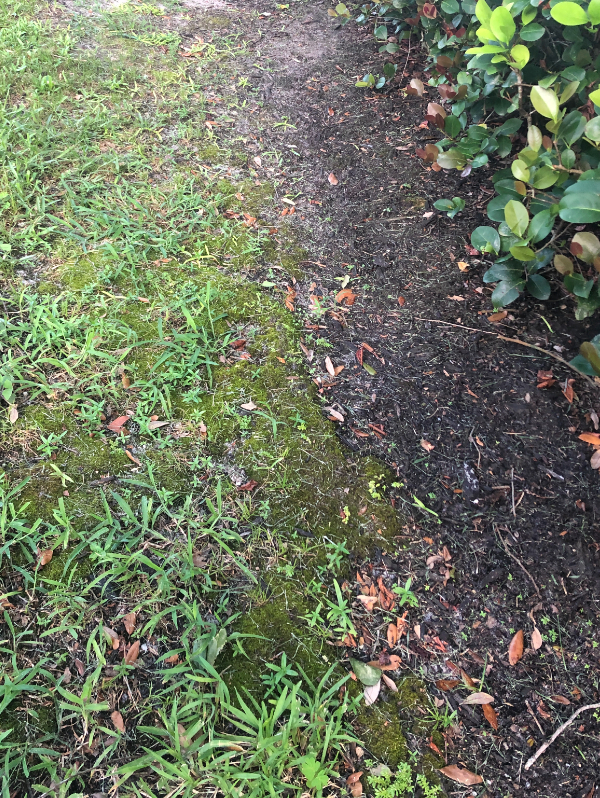Q: I have a bed with foundation plants and oak trees on the side of my house. The soil between the shrubs and trees is covered with a green and black mat. What is it? Is it algae? Is it hurting my plants? Can you help me learn how to manage algae on the soil in the landscape?
Doug
Via email
Boca Raton, FL
A: Algae and moss in the landscape often is a sign of soil problems, including soil compaction, pH problems, and water issues. Algae on the soil usually imply too much water applied to the area and low or acidic pH. It can also indicate low oxygen levels. However, it does not hurt the plants.

The place to start for answers is with soil tests. Soil testing is a check-up for the soil. It can provide information on some nutrients and pH, and could include such things as salinity or organic matter. Check with the local Extension Office for soil testing by the State University or talk with your favorite plant nursery; they may offer soil testing or recommend a private lab.
Soil acidity or alkalinity in the landscape affects the amount of a nutrient available for plant use. The scale which describes this factor is the pH scale which ranges from 1 to 14, with 1 being the most acidic, and 14 being the most alkaline, 7 is considered neutral. Many soils on the Treasure Coast are alkaline in reaction; however, most plants prefer soil slightly on the acid side, 5.5 to 6.8. Ixora, gardenia, hibiscus, and allamanda all prefer acidic soils and may require applications of the nutrients tied up in more alkaline soils, such as iron (Fe) and magnesium (Mg).
How the sample is taken is key to a good test wherever your soil is tested. A composite sample is essential. Take several small samples ranging from the surface to about 8 inches deep. Mix the samples together to obtain an acceptable composite. It should be dried without heat before testing. A pint of soil is a good amount for testing.
Lime may be added to raise pH if the soil pH is low. Do not add lime without a soil test; few soils in some tropical and sub-tropical areas require or will benefit from the addition of lime. High pH is more often the problem. Elemental sulfur is sometimes added as a soil amendment to lower the soil pH.
Sulfur is slow acting in the soil and lasts only for a short time; the pH will return to its original value as soon as the sulfur is used. So, to maintain a lower pH through sulfur, it must be added several times a year. Better solutions for a high pH soil include installing plants adapted to the pH, using fertilizers derived from sulfate or urea, and applications of organic matter such as rotted manure, compost, or peat moss mixed into the soil.
Check out the irrigation for the best algae control. Soils that are compact, off in pH, and stay wet grow algae. Make sure the area has time to dry out.
This column first appeared in the Treasure Coast Newspapers.
Leave a Reply